Remember when simple routine tasks were something you took for granted?
In some patients with knee osteoarthritis, only a singular part of the knee is affected. The medial portion of the knee is usually affected, and in some rare circumstances, the lateral section of the knee can be as well.
The difference between a partial knee replacement vs. a total knee replacement lies in the fact that a partial knee replacement replaces only the affected section of the knee. A total knee replacement involves the replacement of all three sections of the knee. The anterior and posterior cruciate ligaments are upheld in a partial knee replacement, but are removed during a total knee replacement.
If severe knee pain is changing your lifestyle, then you need to know this: The new concept in joint replacement surgery is to replace only the worn-out portion of the arthritic joint and save as much of the natural knee as possible. Please click here to view the Memorial Hermann video that explains it all. Please see the additional two television news videos in the video library below where Dr. Likover introduced Oxford partial knee replacement to the city of Houston in 2004.
A large number of people with osteoarthritis of the knee have worn out only one of the three compartments in the knee. If this is the case, the individual may only require a partial replacement. The Oxford® Knee Replacement is the first implant that can accomplish this task with proven long term success of good or excellent results of 95% at 15 years and beyond.
For this reason, the Oxford® makes a whole or total knee joint replacement NOT necessary in many cases. The Oxford procedure is so successful that as of 2013 the manufacturer of Oxford, the Biomet Corporation, is now giving a lifetime warranty on the implant.
X-Ray Showing Oxford Knee Replacement
The x-ray in the middle photograph below represents bone on bone osteoarthritis. This occurs due to degeneration or “wear and tear” of the articular cartilage, and degeneration or surgical removal of the meniscus. Once this situation develops, the individual usually has severe pain. An Oxford partial knee replacement is perfect for this situation.
The x-ray photograph on the right below demonstrates the appearance after an Oxford has been placed. One can see that the bone-on-bone rubbing condition has been replaced by the Oxford with its meniscus replacement bearing (the white horizontal line between the metal).
The model in the left photograph portrays how the implant actually sits between the bones and cruciate ligaments (white ropes in the middle of the knee) and the medial collateral ligament (white rope on the right side of the knee). A total knee replacement is not necessary for this situation.
- Oxford knee sitting between the bones and cruciate ligaments
- Bone-on-bone osteoarthritis
- Oxford system in place
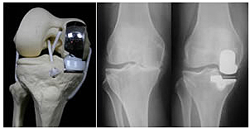
Hover above the images below to see actual surgical photographs of what arthritis looks like and what an installed total knee looks like. WARNING DO NOT HOVER IF YOU DON’T WANT TO SEE INSIDE THE HUMAN BODY.
This is what bone on bone only on the inside of the knee looks like:
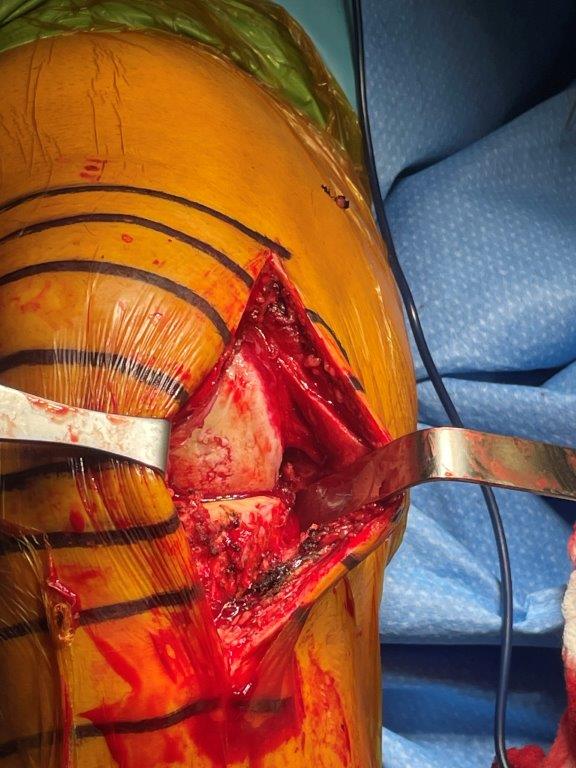
This is what Oxford Partial Knee Replacement looks like installed:
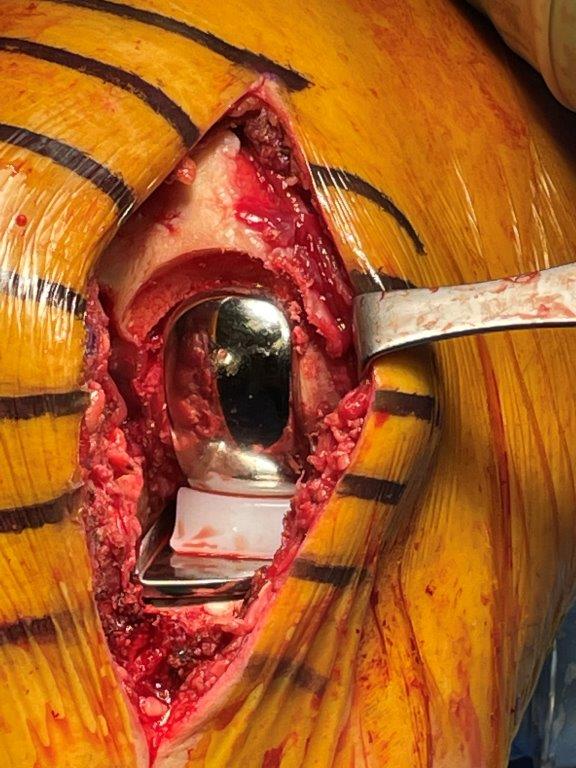
The Oxford® Unicompartmental Knee Replacement System offers these advantages:
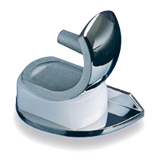 Unicompartmental Knee
Unicompartmental Knee- At 15 years following surgery, 95% of implants are still functioning well.
- More normal motion of the human knee
- Only a portion of the knee is replaced, making this procedure available to a younger population
- Minimally invasive – a small incision is utilized
- Less pain due to a smaller operation
- Outpatient, or one or two nights in the hospital
- Quicker recovery – discontinue crutches as fast as one desires
- Covered by Insurance and Medicare
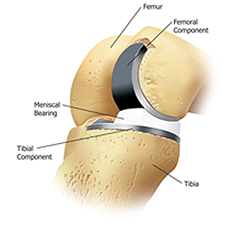
The Oxford® Unicompartmental Knee System
No other partial knee replacement has the proven success rate and longevity of Oxford partial knee replacement. Until Oxford knee replacement came along, most orthopedists in the United States did not do partial knee replacement because of the high failure rate of earlier implants.
Many orthopedists today still do not recommend partial knee replacement for their patients because they are not familiar with Oxford or qualified to do it. If your orthopedist tells you “partial knee replacement does not work”, you need to get another opinion.
If your orthopedist tells you a different brand of partial knee replacement has the same success rate of Oxford, ask him to show you the scientific paper or data supporting his opinion. It is crucial to understand the best options for yourself when it comes to a partial knee replacement and ensure that you have all of the most accurate facts available.
More Normal Motion with Oxford Knee Implant
The Oxford® Unicompartmental Partial Knee Replacement prosthesis allows for a better range of motion of the knee by virtue of replication of the function of the menisci and allows for more normal motion of the human knee. With the Oxford partial knee replacement, only a portion of the knee is replaced.
In performing an Oxford, the anterior cruciate and posterior cruciate ligaments are always preserved. In performing a total knee replacement, the anterior cruciate ligament is always removed; sometimes the posterior cruciate ligament is removed as well.
In some cases, this prosthesis may be applicable to individuals who were previously considered too young to undergo a total knee replacement.
The Oxford knee implant utilizes a minimally invasive procedure in which patients may experience less pain and a quicker recovery time than experienced with a total knee replacement. Read about the Oxford partial knee replacement recovery time.
Why Come to Houston for an Oxford Partial Knee Replacement
To be qualified to implant an Oxford, the United States Food and Drug Administration requires an orthopedic surgeon to attend a special training course. This training is required because the implantation technique for this procedure is very precise and the operation must be done correctly.
Dr. Likover attended one of the first training courses. As of January 2012, Dr. Likover has implanted over 1100 Oxfords, which means he has more experience in this procedure than most surgeons in the United States. You should consider coming to Houston to have Dr. Likover do your surgery for this reason.
Several people have inquired about “Makoplasty” robot procedure. The Mako procedure has no long term success rate reported in the orthopedic literature.
The Mako involves placing a fixed bearing implant, which is similar to the Ripici knee implant, with computer guidance and a robot arm. The Ripici implant had a high failure rate. It has not been proven that placing this type of implant by robot technique improves the success rate.
If you have substantial pain in your knee, you should schedule an appointment with Dr. Likover for a complete evaluation of your knee pain problem.
You may only require arthroscopic surgery, you may need an Oxford partial knee replacement, or you may need a total replacement. Most substantial knee pain problems can be helped or cured by modern orthopedic surgery.
Please read the knee replacement testimonials about Oxford unicompartmental knee replacement system for more information.

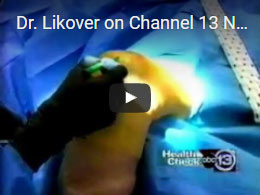
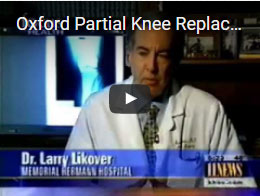
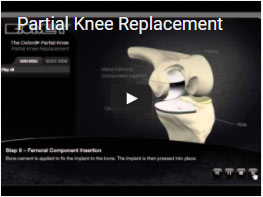
 Dr. Larry Likover has been practicing orthopedics on the west side of Houston for 43 years, treating knee, hip, shoulder, and back problems. Dr. Likover is board certified in orthopedic surgery and provides knee replacement in Houston for patients worldwide.
Dr. Larry Likover has been practicing orthopedics on the west side of Houston for 43 years, treating knee, hip, shoulder, and back problems. Dr. Likover is board certified in orthopedic surgery and provides knee replacement in Houston for patients worldwide.